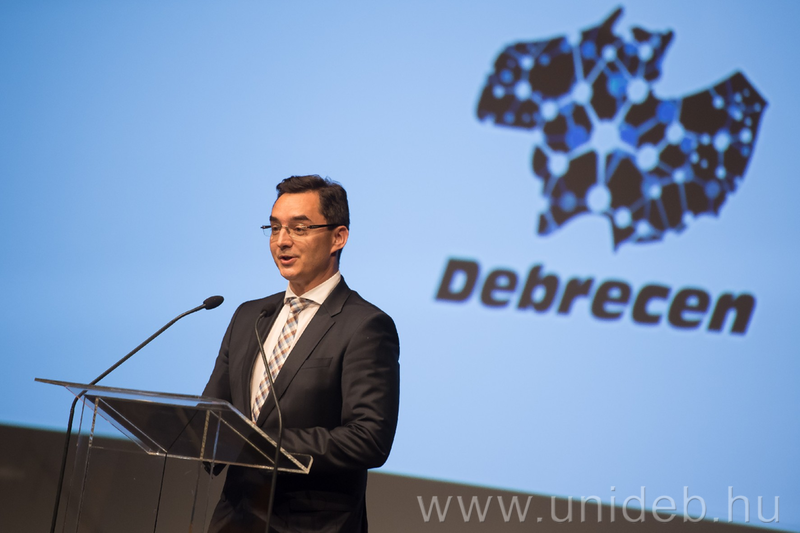Members of the top management of our university presented a mini-concert at SONS festival. At the opening of the educational festival called Science on Stage, university professors representing UD demonstrated transformations in the human brain prompted by the perception of rhythm.
At the four-day event, the best teachers of science from across Europe gathered to exchange best practice teaching ideas and concepts.
“How can we become better teachers? How can we bring science closer to our students?” These were the main questions addressed by László Palkovics. According to the State Secretary of Education, Science on Stage would surely provide answers to these dilemmas, too, as the participants of the festival held in Debrecen would all be educators whose passion is primarily teaching.
There were about 450 of these educators from as many as 30 countries in Debrecen’s Kölcsey Központ, sharing ideas about how science can be made interesting and exciting for students, which László Palkovics believes has to be taught in a creative fashion because you cannot attract the kids’ attention in any other way. The State Secretary of Education also announced that, according to the government plans, 30 thousand fifth-graders across Hungary would be receiving their teaching material at school on tablets from as early as the fall of 2018.
Mayor László Papp christened the Debrecen event the Olympic Games of Sciences, and added that one of the long-term objectives in the development of our city would be to make it even more alluring for young people who wish to learn more. He emphasized the fact that the future would belong to natural sciences, for which reason he attached primary importance to the efforts to make these fields popular with the members of the younger generation again. In addition, he also expected this festival to be a vehicle of passing on and exchanging knowledge and experience in a way that could be favorable and advantageous for our city, too.

Following the opening ceremony, the trio of Zoltán Szilvássy, Rector of the University of Debrecen, Ervin Berényi, Director of the Inbstitute of Medical Imaging at the Clinics Center, and József Tőzsér, Director of the Department of Biochemistry and Molecular Biology at the Faculty of Medicine, gave an unorthodox academic presentation by the title “A páratlan elektrontól kezdve a zenén át a működő agyig” [verbatim: Starting from the Unpaired Electron through Music to the Working Brain], illustrated with musical inserts. The focal point of their presentation was the transformations in the human brain induced by music that can be displayed by way of imaging procedures. The professors played the drums and the organ to illustrate physical and chemical processes documented through magnetic resonance in the brain as a reaction to music and rhythm. They revealed that, since emotions generated by music can be easily separated from other sensations, it could be utilized both in pharmacy and in gastroenterology.

For the closing of the opening session, László Csernoch, Vice-Rector for Academic Affairs at the University of Debrecen, shared his ideas in a talk about the teaching and programs of natural sciences. He underlined the importance of the parallel between the curiosity of very young children, who are open to learn about the surrounding world and get to learn more easily because of this childlike curiosity, and that of students, whose curiosity should be maintained in education, which would be a real challenge especially in the fields of physics, chemistry, biology, math, and information science.
At the largest festival in Europe on the education of natural sciences, Hungary was represented by 70 teachers altogether in Kölcsey Központ, where they got a chance to present what kinds of new ideas, methods, and experiments they had used for the instruction of natural sciences in their own schools.
The workshops, presentations, and forums of these festivals are usually intended primarily for the initiated, although Saturday was a day open for the general public. A multitude of colorful programs and popular science presentations were offered on Baltazár Dezső tér, next to Kölcsey Központ, for anyone interested, including but not restricted to an introduction to virtual reality, robot programing, and robotics in general.